English football will return this midweek after an unwanted hiatus due to the worldwide pandemic. However, the current third-place holder, Leicester City, will join the party a bit later on Saturday. Before the suspension, The Foxes won their last two matches convincingly. In those games, they scored five goals, conceded none, and even booked a quarter-final ticket in the FA Cup. They are surely looking to continue their positive run in the Premier League.
One of Leicester’s important figures this season is James Maddison. The 23-year-old proves his worth with brilliant performances every week. Such performance even convinced Gareth Southgate to give the youngster his national team debut back in November. Without further ado, this tactical analysis will inform you about Maddison’s role and impact for his team.
James Maddison Style Of Play
Maddison is originally an attacking midfielder. He played most of his games as an offensive midfielder in a 4–2–3–1 for Norwich City before joining The Filberts in June 2018. However, his role changed under Brendan Rodgers. The former Liverpool manager prefers to set his team in a 4–1–4–1. In that formation, Maddison often plays as a left-side central midfielder alongside Youri Tielemans and/or Dennis Praet.
To be fair, Rodgers is not a tactically-rigid manager. He also likes to deploy other formations, ranging from 4–1–2–1–2 (4–4–2 diamond), 4–3–1–2, 4–3–3, or even 3–5–2. In those shapes, Maddison can play as a central midfielder, an attacking midfielder, or even a left-winger whenever needed. Such versatility helps the 23-year-old to cement his place in Rodgers’ tactics.
Let’s talk a bit about his contribution. So far, Maddison has scored nine goals and made three assists in all competitions this season. Interestingly, some of those came from set-piece situations. This is the reason why some news outlets compared him to the Manchester United legend, David Beckham. This scout report will dig deep on Maddison’s importance for Leicester.
Build-up roles
Rodgers mainly sets his team up in a 2–5–3-ish shape in possession. It means that the full-backs are given the license to bomb forward and provide width in parallel with the midfield line. As a central midfielder, Maddison is tasked to stay in his position on the ball; inside the left half-space. By doing so, he would help Leicester’s centre-backs to have more forward passing options to choose.
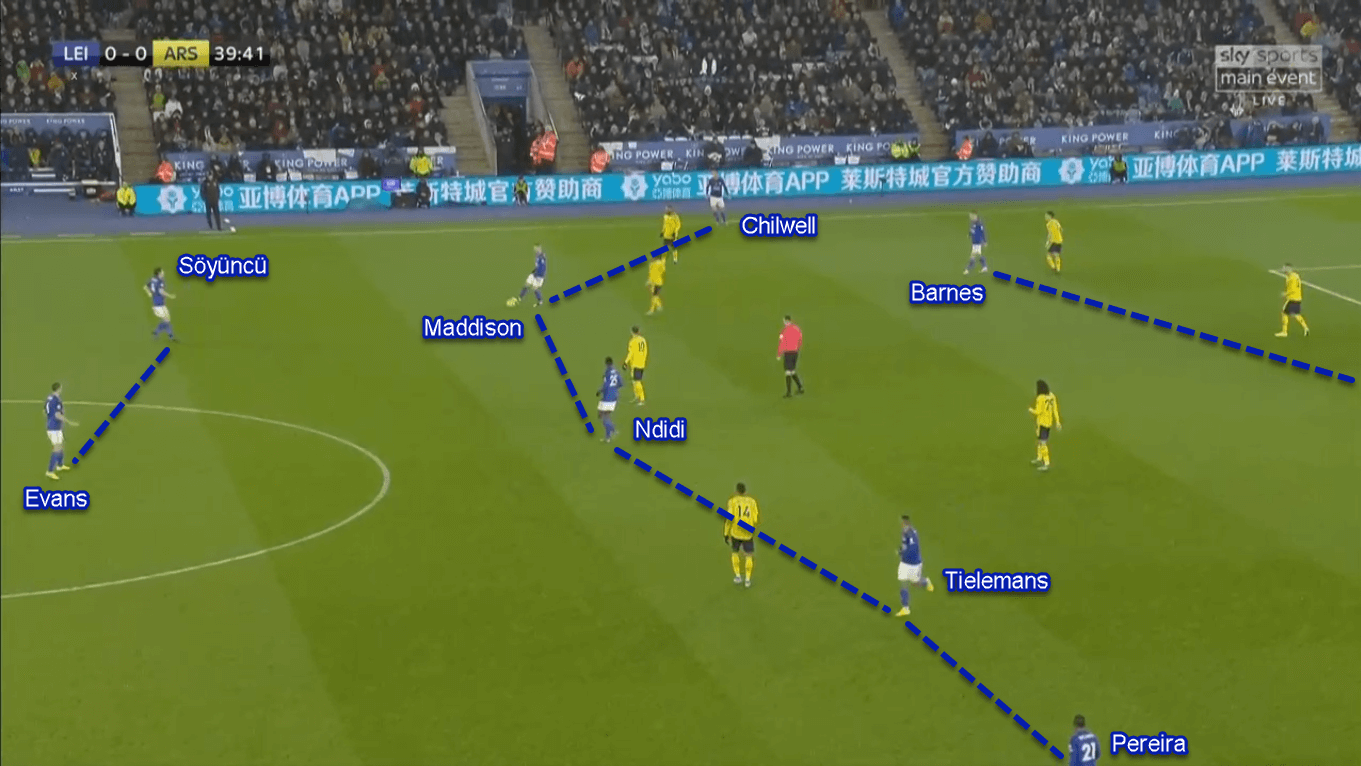
However, he can also help the deeper players when needed. Mainly, Maddison would drop next to the defensive midfielder, but still inside the left half-space. Furthermore, he can even drop deep alongside the centre-backs. By doing that, he can help his team to have a numerical superiority at the back.
Maddison’s tendency to drop has more advantages. First, it would open a gap in between the lines. Such gap can be attacked by Leicester’s defensive midfielder, mainly Ndidi. In the process, Ndidi can even receive a forward pass in between the lines. Secondly, it can also help Leicester to build their attacks from the left flank. We will talk about that in the next part of the analysis.
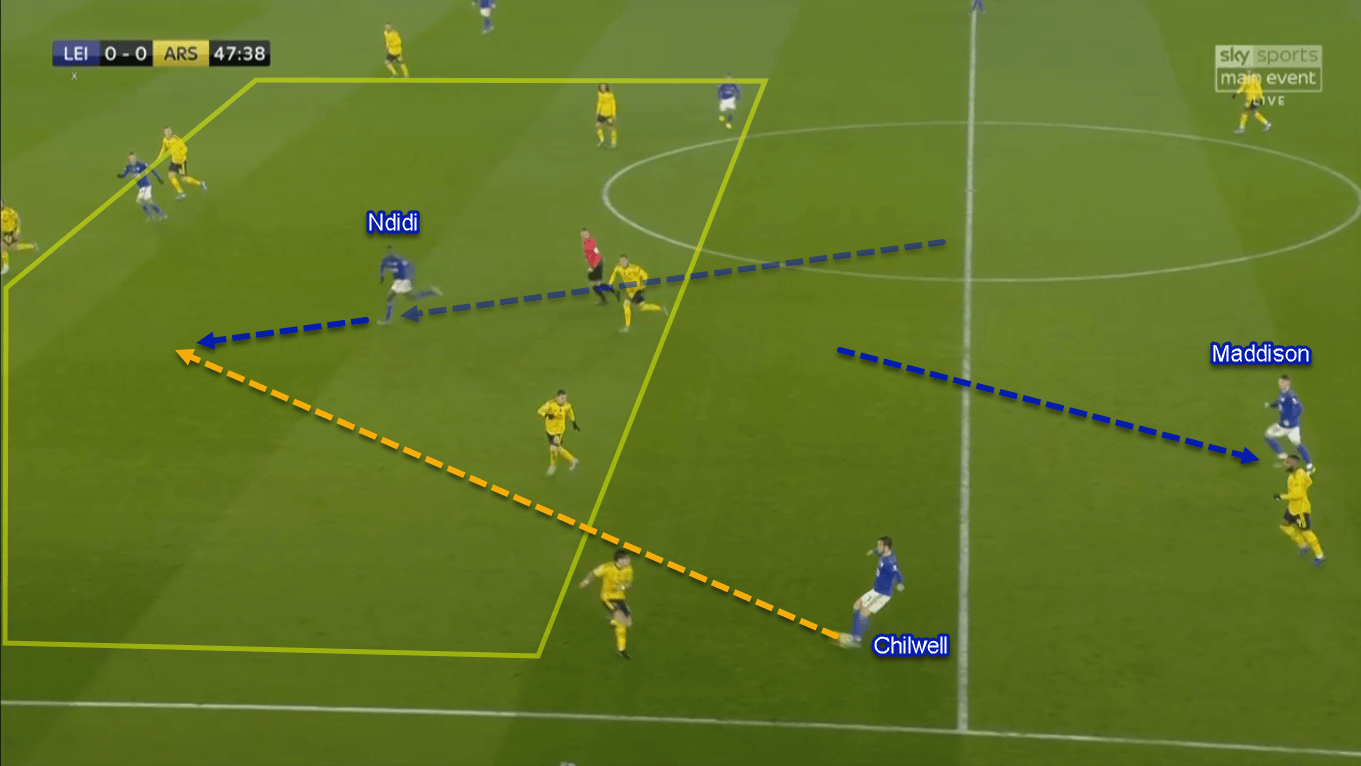
As an attacking midfielder in a 4–3–1–2, Rodgers would also give the same task for Maddison. That is to stay in his are in build-up situations; now centrally. The objective behind that is to allow the Englishman to roam in between the lines, and create chaos there. Sometimes, he can also switch places temporarily with Tielemans or Praet. This is because all of them can play in multiple midfield positions.
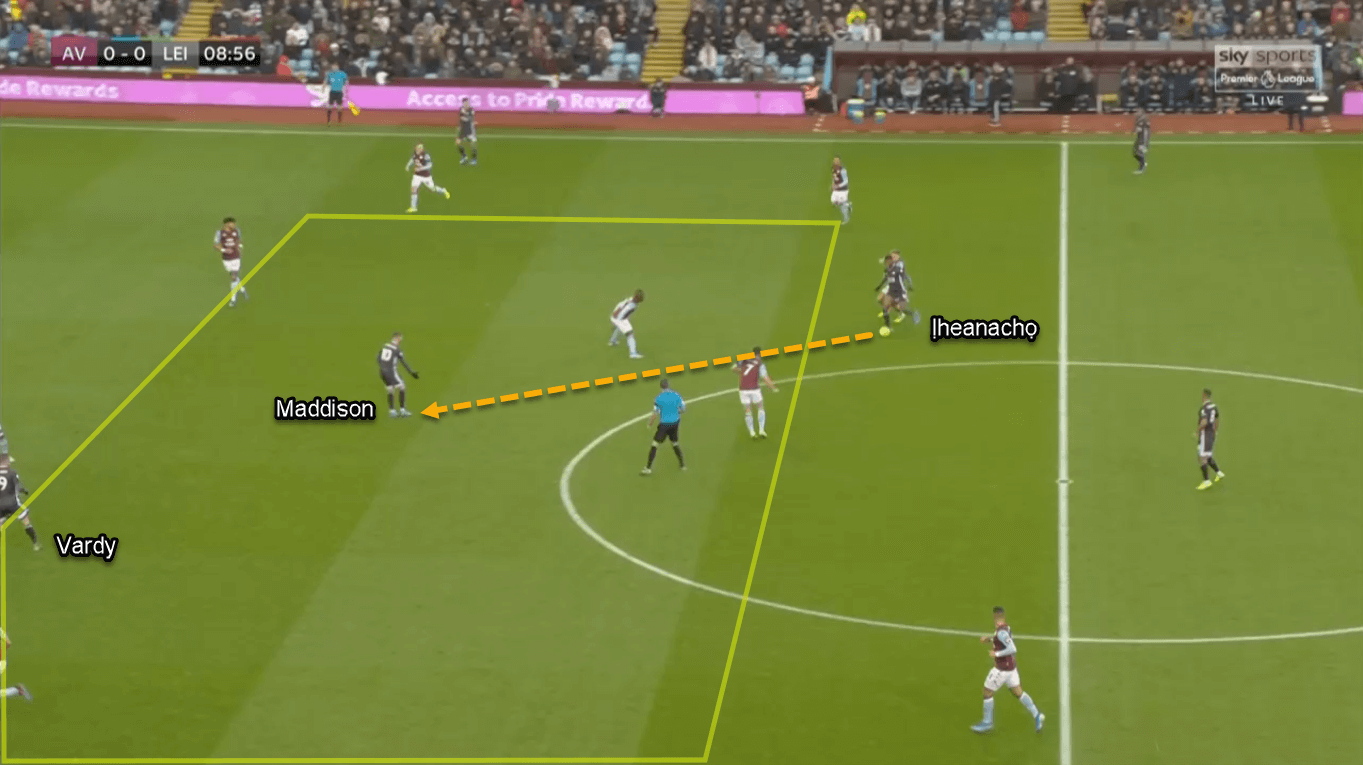
Crucial in the left-flank rotations
Previously, we have mentioned Leicester’s left-flank rotations. If we look at the statistics, 36% of Leicester's attacks come from the left flank. It’s safe to say that Maddison’s role is important to achieve that number.
The left-flank rotations start with Maddison dropping inside the left half-space. As mentioned, he can drop next to Ndidi or even alongside the centre-backs. This dropping movement would allow one of his teammates to tuck inside and another to provide width in a more advanced area.
The first and most-used variation is to instruct the left-winger to tuck inside. In the process, this would allow the left-back to make an overlap into the final third. Lucky for Leicester, they have Chilwell. The left-back is very eager to make overlapping runs before sending crosses for his attacking comrades. The Foxes also have shot-happy Harvey Barnes, who is more than comfortable to play inside. The stats show that Barnes has averaged 2.7 shots per 90 minutes in the league, with 1.7 (62.96%) of them coming from inside the box.
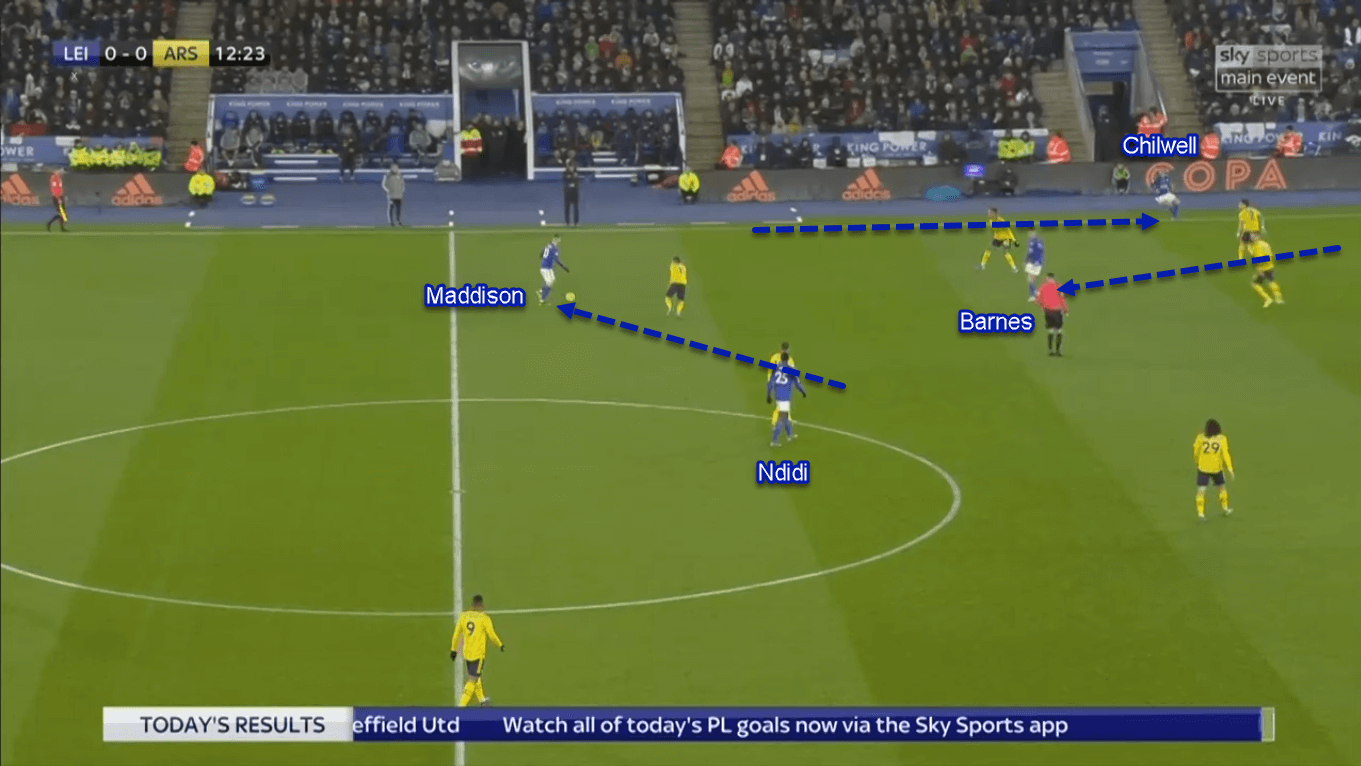
Secondly, by allowing the left-back to move into the half-space while the left-winger hugs the touchline. In this variation, sometimes Leicester allows Chilwell to drive inside into the gap vacated by Maddison. No wonder why Chilwell tops Leicester’s total distance in carries with at least 8,473 yards travelled. Such variations helped The Filberts to unlock their opponents’ defence effectively.
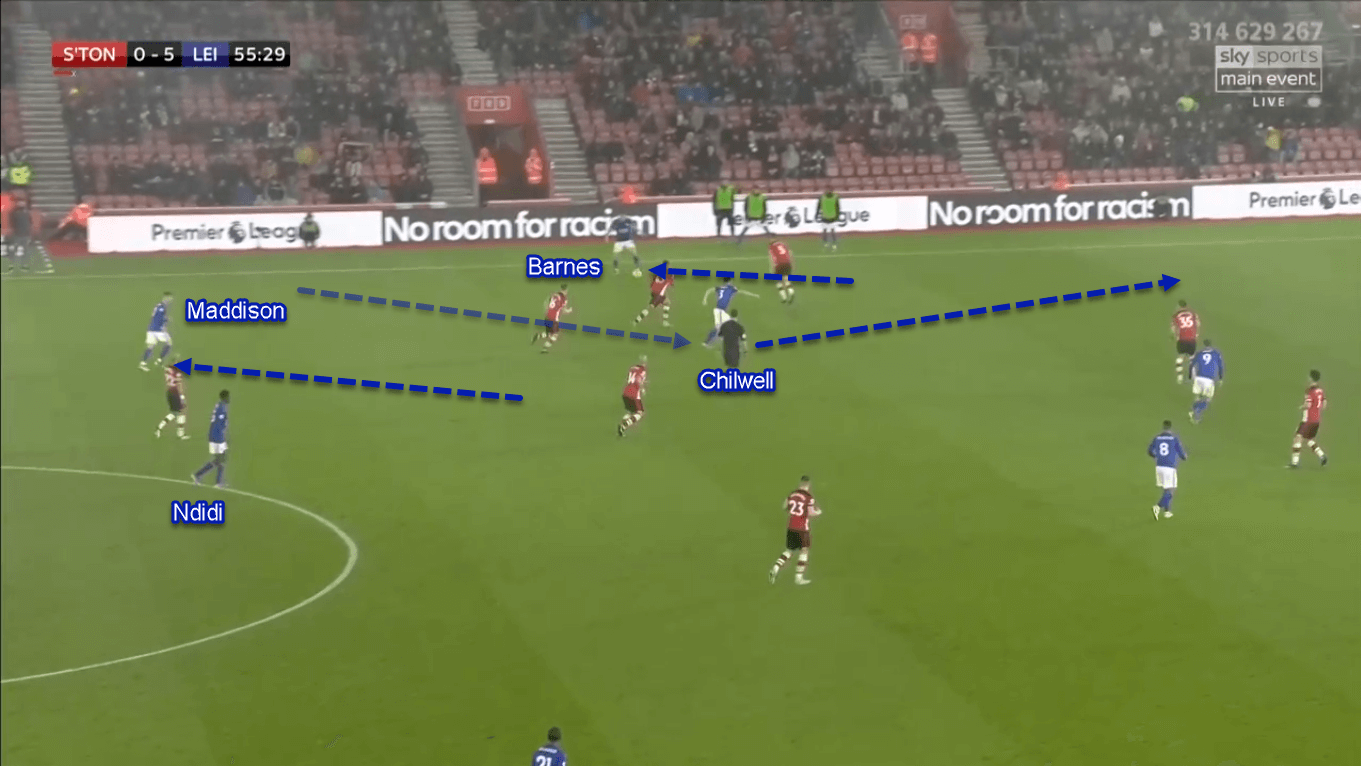
James Maddison Roles in the final third
Previously, this analysis mentioned Leicester’s tendency to attack from the flanks. Statistically speaking, about 76% of their attacks are built through wide areas. While the attackers flood the penalty box, even to the goalmouth, the midfielders have another role.
As a midfielder, Maddison would more often stay on the edge of the box to receive a cut-back pass from the wing player. He could also enter the 16-yard area but won’t be too aggressive in the process. Instead, he would keep offering himself as a cut-back receiver behind Leicester’s forwards.
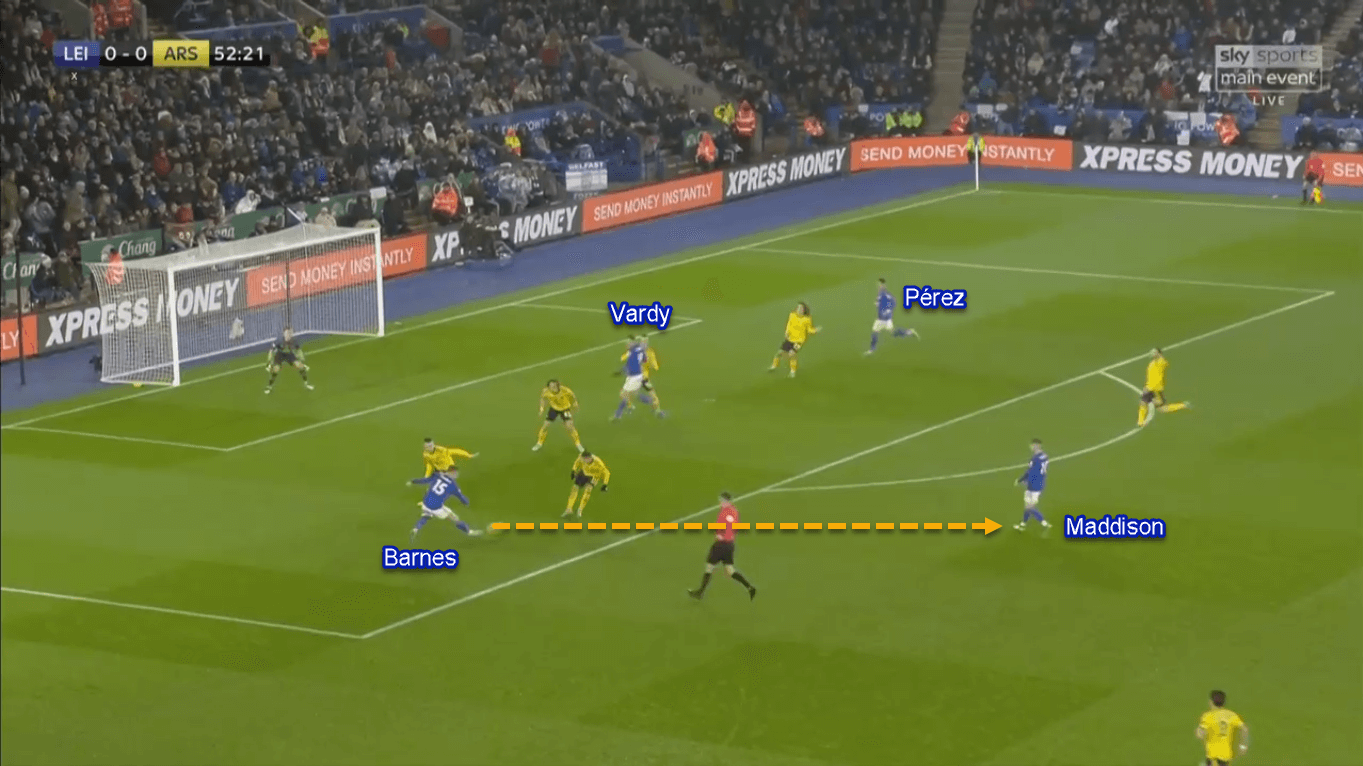
Playing just outside the box also suits Maddison’s traits. He likes to make long-range shots and help Leicester vary itsof attacking approach. The statistics show that Maddison averaged 1.4 outside-the-box shots per 90 league minutes. It’s about 60.86% ofblind spot his total shooting tally (2.3).
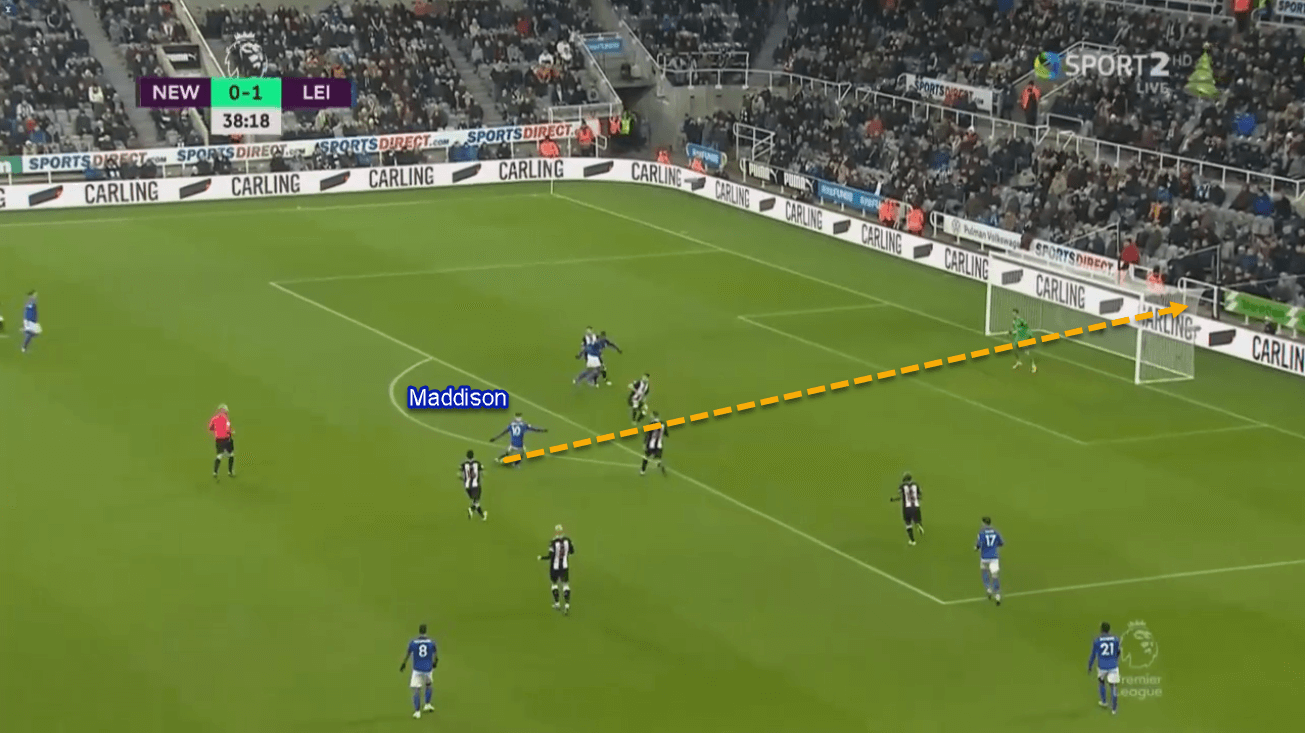
One thing that the teenager needs to polish is his tendency to arrive inside the box. He mainly does this when the ball-side winger or forward drifts wide, thus opening a space for him to roam. In the process, he would come from the opponents’ blind spot,, which makes him hardly detectable. However, he still does this rarely; making this trait more like untapped potential.
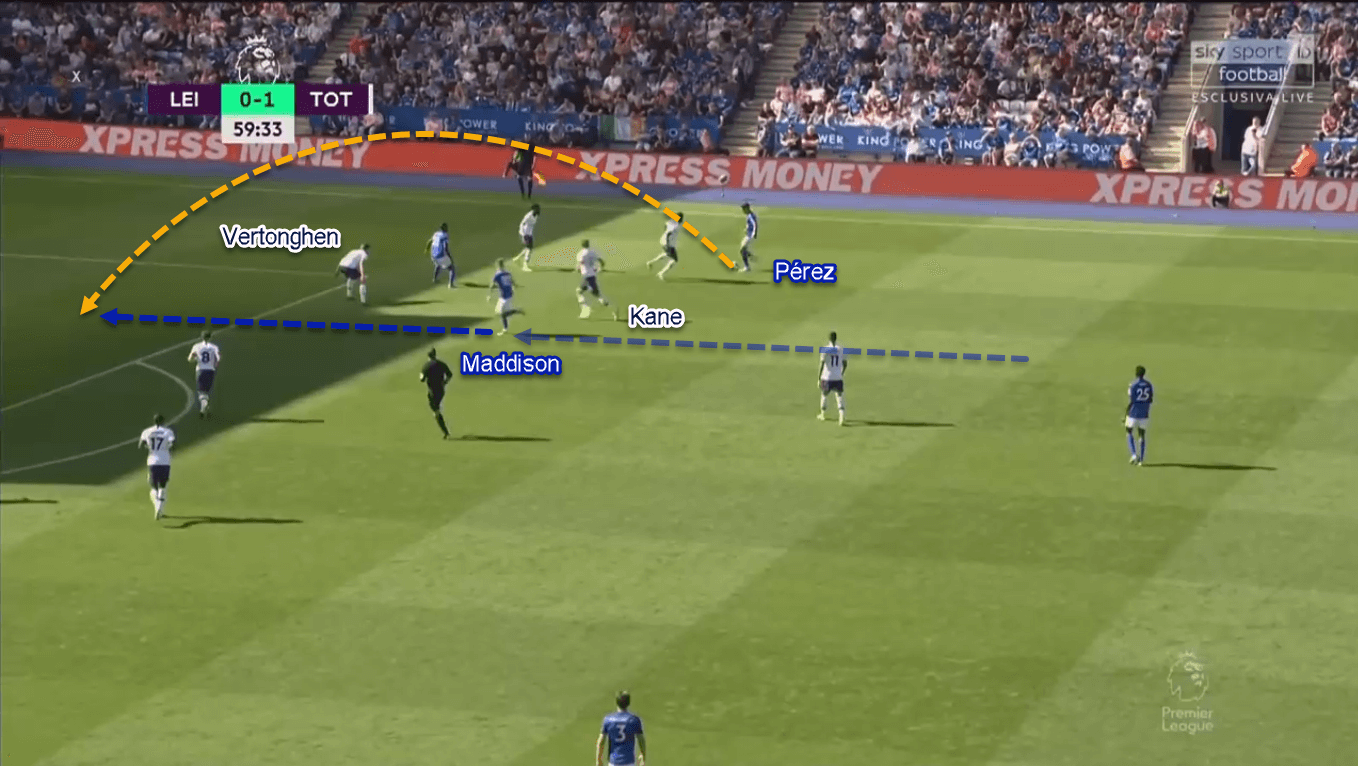
The new Beckham?
Since his arrival, Maddison has been one of Leicester’s main set-piece takers. Alongside the left-footed Chilwell, Maddison offers muchLet’s start with corner kicks. variability in Leicester’s dead-ball situations. 64 goal-scoring attempts from dead-ball passes; third-highest in the league.
Let’s start with corner kicks. Not only can he offer in-swing and out-swing balls somewhat brilliantly, but Maddison can also vary the type of ball he makes. That means he can send whipped crosses as well as floating balls both exceptionally. From the three league assists he made so far, two came from corner-kick situations.
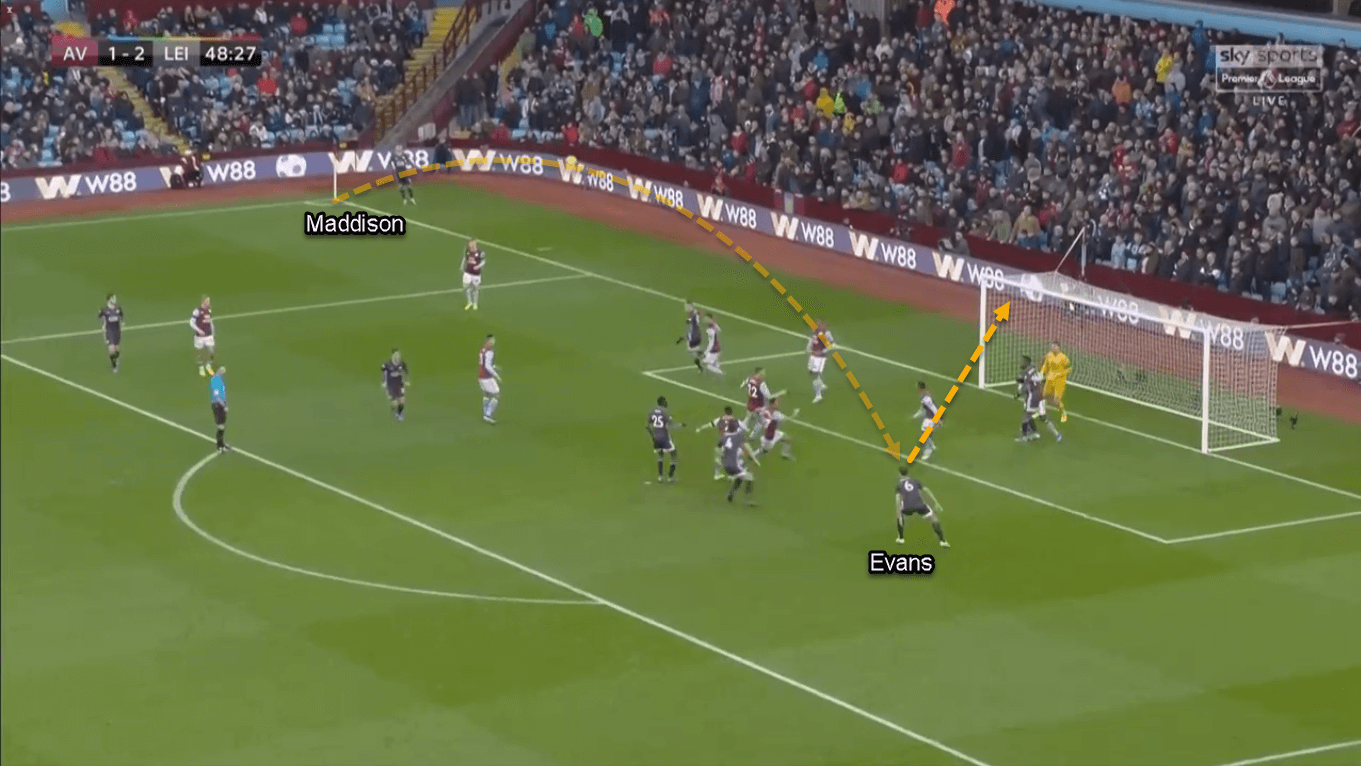
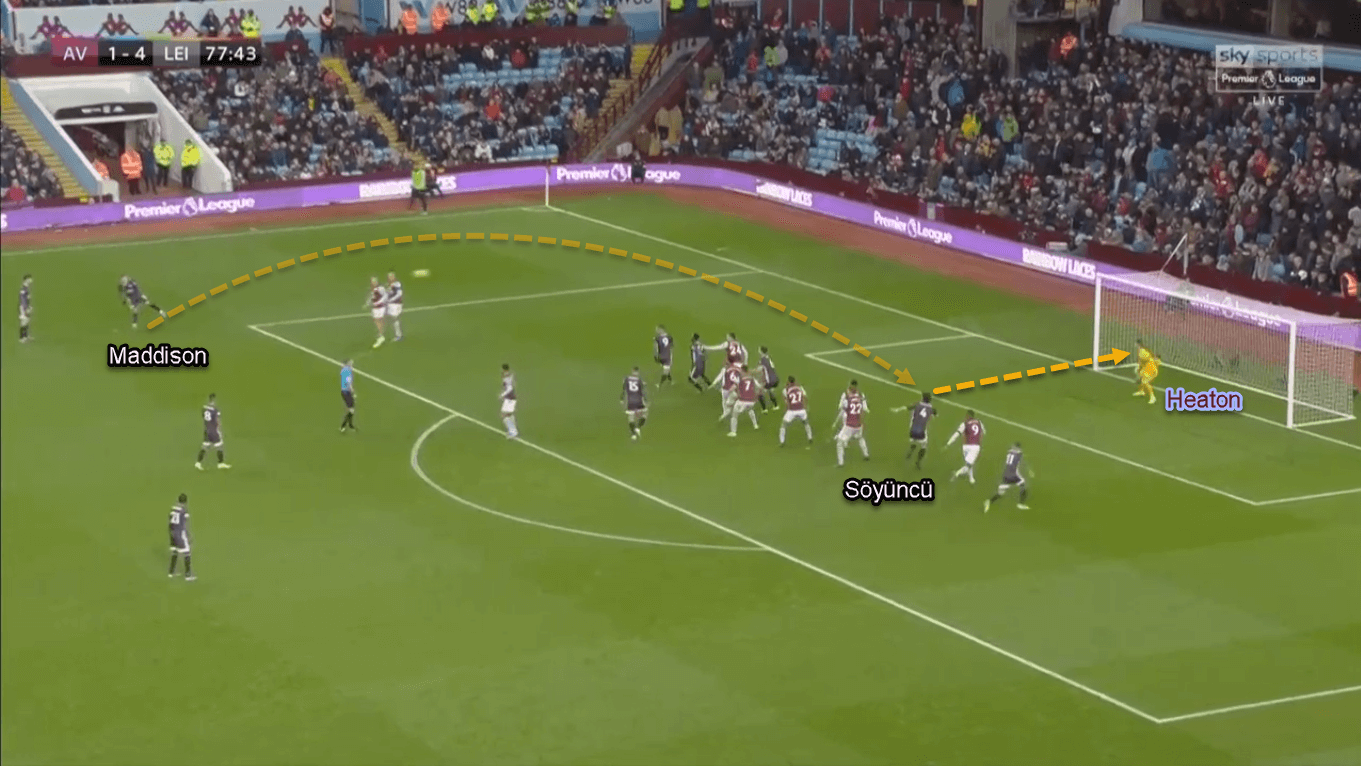
Now, the free-kicks. When the ball is planted in the wide areas, Leicester’s main option is serving their towering centre-backs inside the box. That’s one of the reasons why Evans and Söyüncü have combined to make 2.97 expected goals (xG) thus far. However, when the dead-ball occurs centrally — or just outside the penalty box — Maddison would happily take the goal-scoring chance for himself. This season alone he has made two goals from free-kick situations.
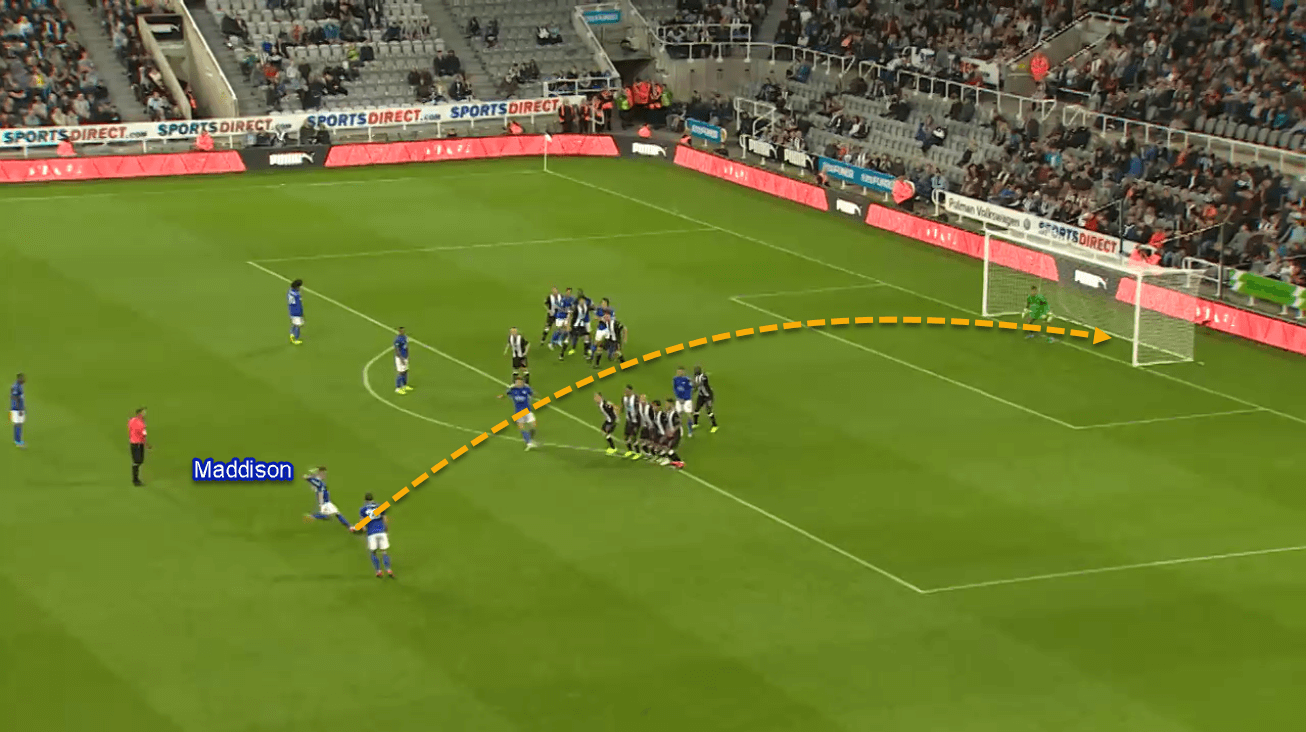
Despite being positioned more centrally, Maddison can also drift wide. The goal is to overload the flanks with the full-back and the left-winger. From there, he can send crosses into the box. Looking at the stats, Maddison currently leads Leicester’s crossing tally with 2.1 successful crosses per 90 league minutes.
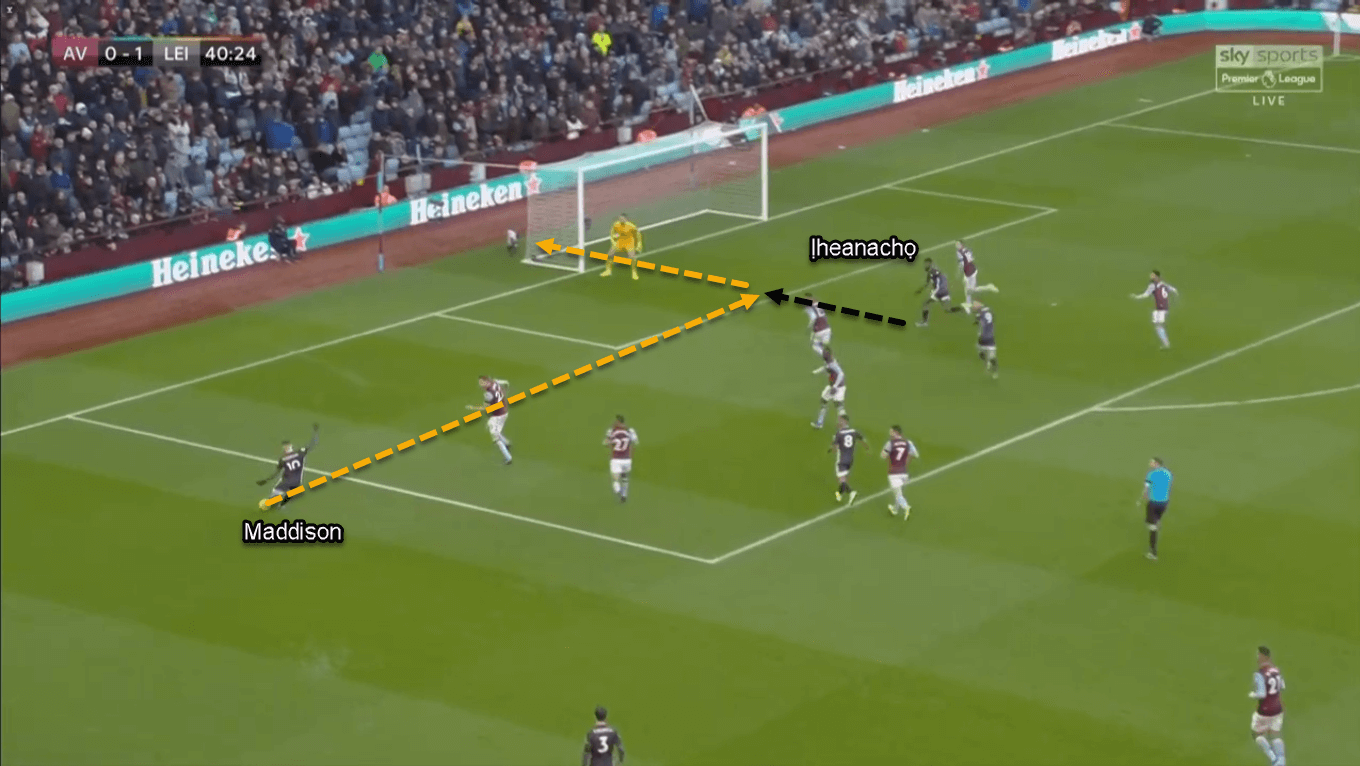
James Maddison Defensive roles
Rodgers prefers to set his team up in a mid-block 4–1–4–1 when not having the ball. Mainly, he asks his men to defend zonally and protect the central lanes rather than pressing aggressively. Within the shape, the players could also prevent nearby passing options for the on-ball opponent and force him to play wide.
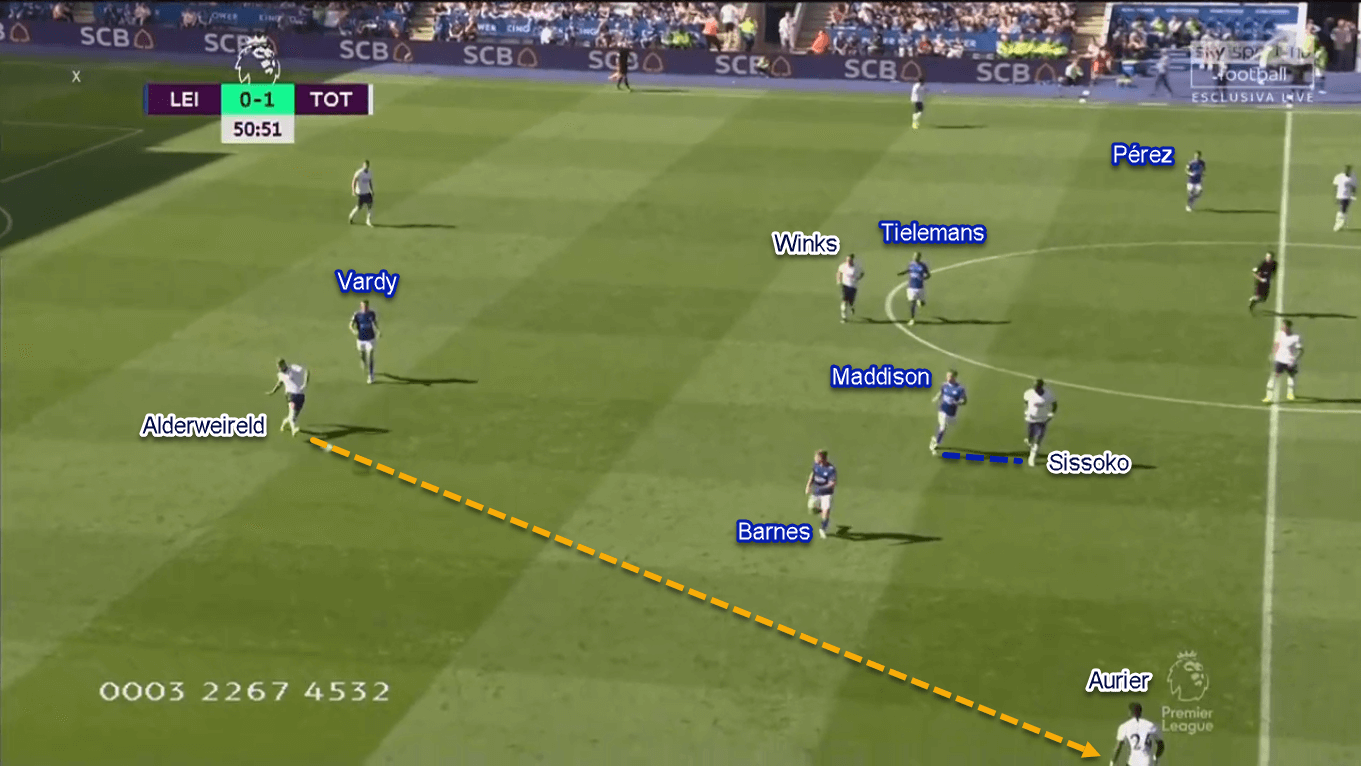
As a central midfielder, Maddison would only come to press when the opponents’ ball-side midfielder has received the ball. In the process, he would even press aggressively when the ball still makes its way to the opponent. The objective is to prevent the opponent’s midfielder from receiving the ball comfortably. It also forces the opponent to play wide or even retreat the ball to the defenders just after receiving it.
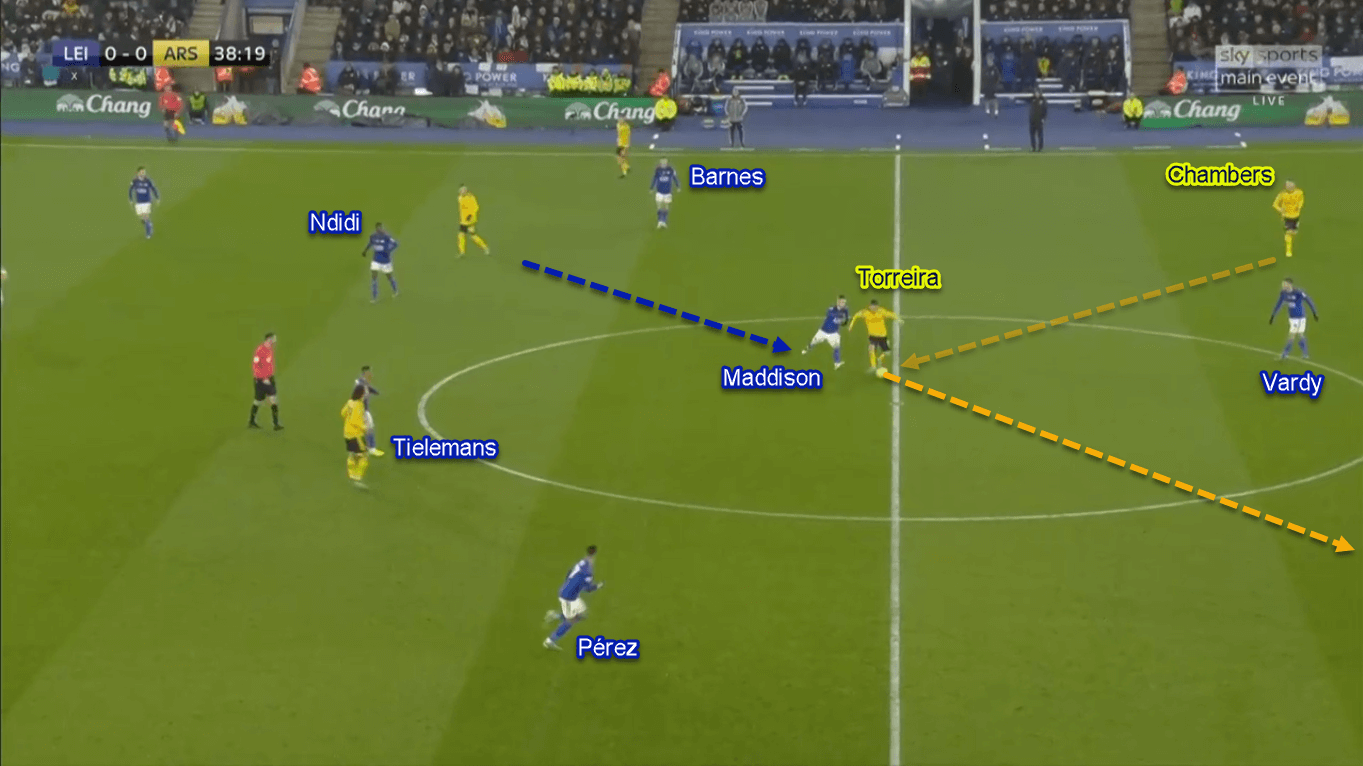
Leicester’s press is more aggressive when the ball has reached the flank. When it happens, Rodgers instructs his men to close all nearby passing options while also pressing the on-ball opponents. Maddison would be tasked to prevent a pass to the nearest opponents’ midfielder to him, either the sole defensive midfielder or the right-sided central midfielder.
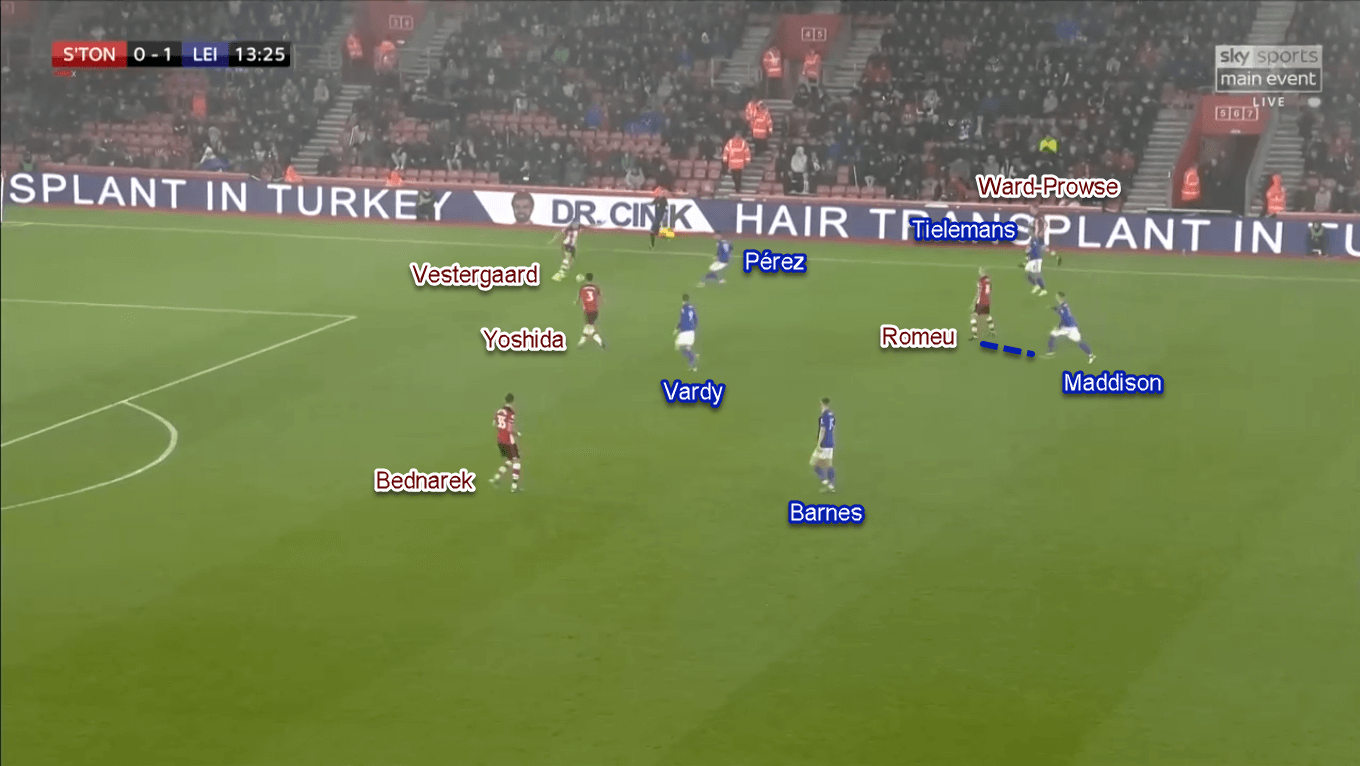
However, The Foxes can also play a higher pressing system when needed. In such a situation, Rodgers would set his team up in a 4–1–2–3 shape. Maddison’s task in the high-press is still similar: prevent the nearest opponents’ midfielder to him to be played short. The pressing objective is to force the opponents to play wide or even launch long-balls against Evans and Söyüncü.
Serving others in transitions
Despite being a more possession-based team under Rodgers, The Foxes keep their counter-attacking soul intact. For a fact, Leicester have made seven goals in transition so far, the second-highest in the Premier League. So, what are Maddison’s roles in Leicester’s transitional attacks?
Mainly, the 23-year-old serves as a distributor, bridging the deeper players with the attackers. In the process, he would focus on playing the ball forward whenever possible, mostly with sharp passes in behind for Jamie Vardy. However, the forward passing lanes are not always available. Maddison would vary his approach by spraying the ball wide if this happens. Then, the ball-side winger or full-back can continue the attack.
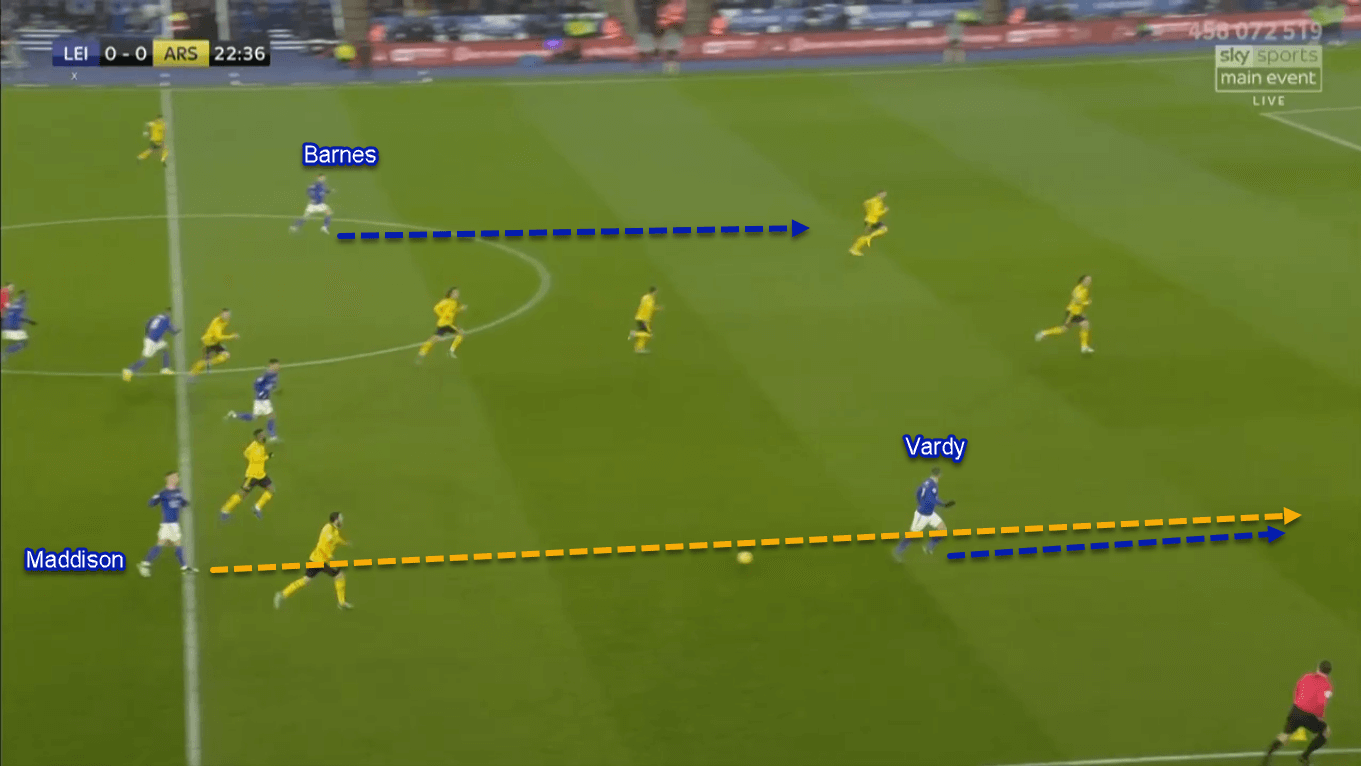
Despite primarily acting as a distributor, the Coventry-born midfielder can also join the counter-attacks as a runner. Maddison has decent acceleration and pace in his armoury to join the transition when possible. However, he would not go straight into the box or appearing in the goalmouth. Instead, Maddison would offer himself in the edge of the box as a cut-back option while Vardy pinning the defenders with him.
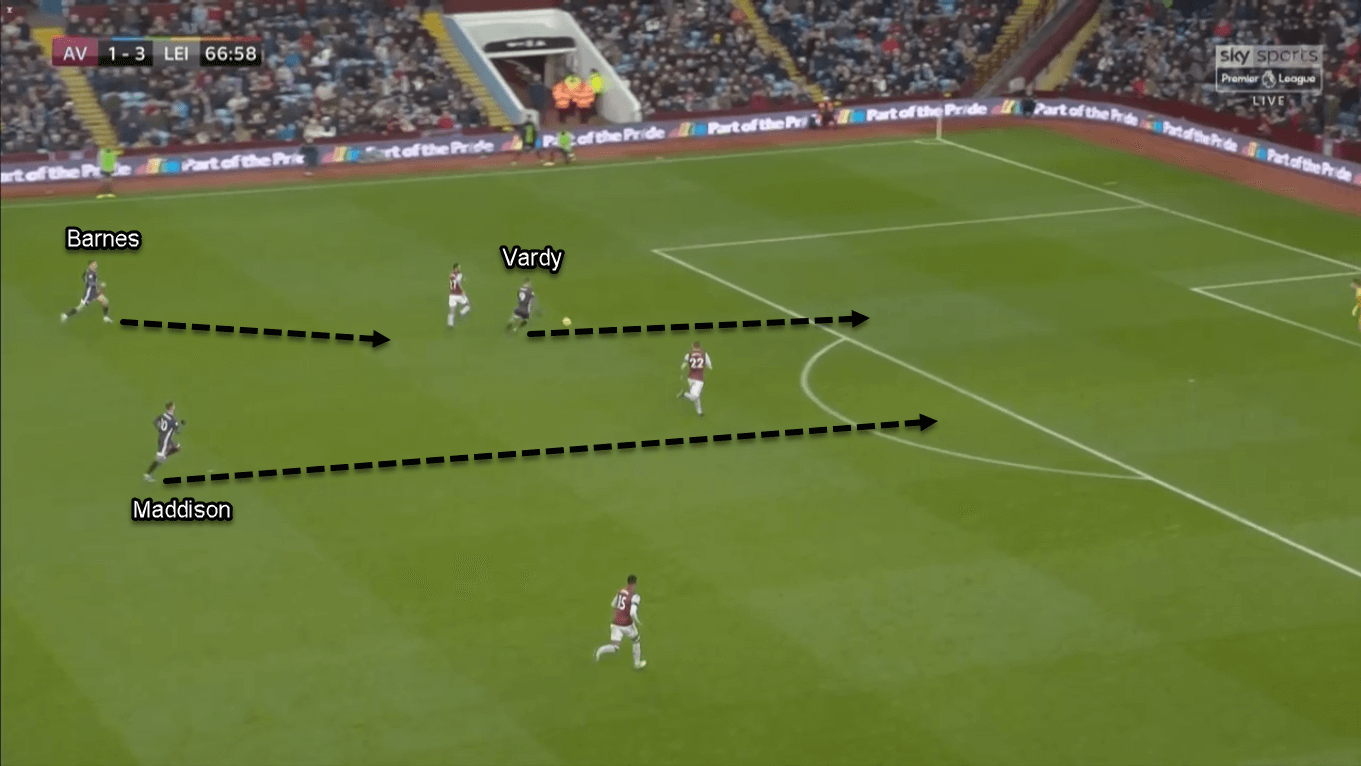
Potential issues
The main issue in Maddison’s game is probably his long-range passing ability. That being his lack of quality to provide switch passes. Indeed, he has great potential — particularly in making crosses — but he’s definitely not Beckham yet. As a central midfielder, the long-passing ability is crucial as it reflects the player’s vision, decision-making, and technique.
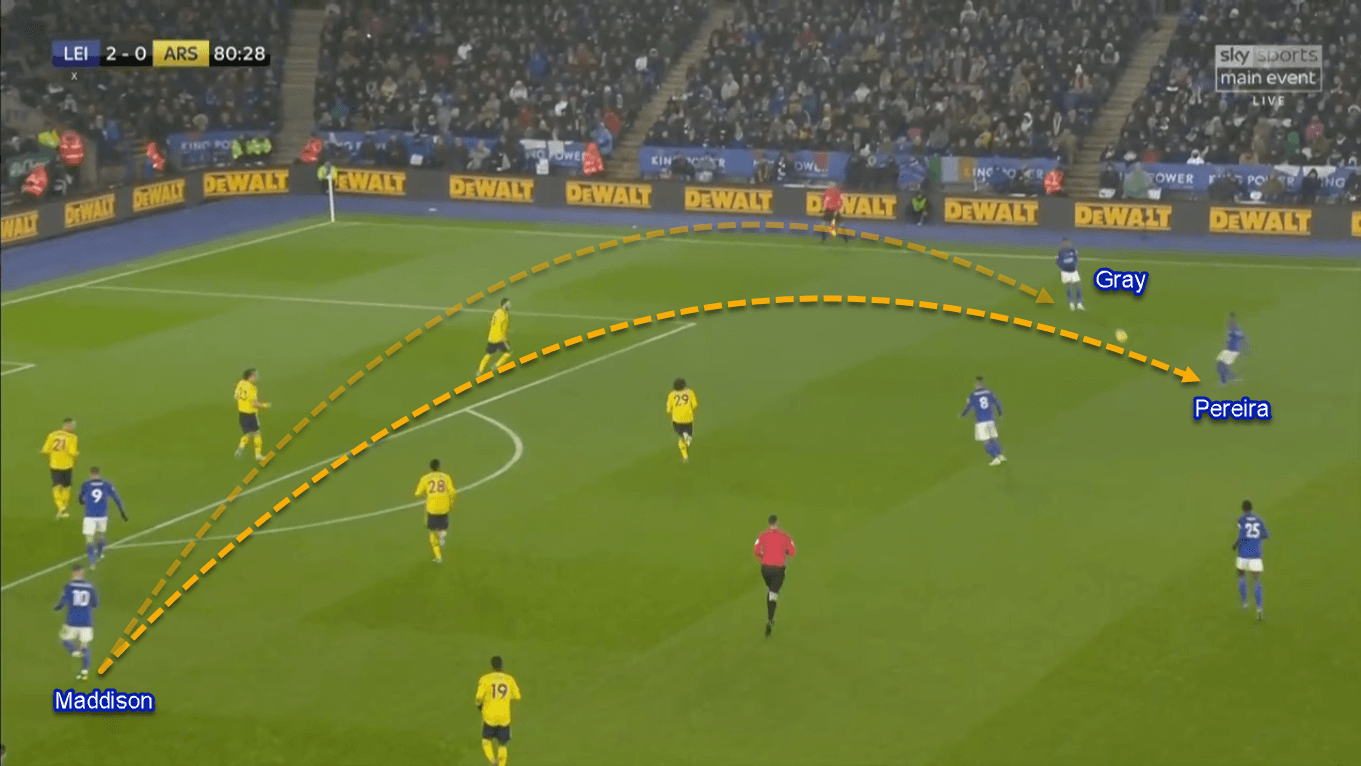
Another issue is probably his positioning and offensive IQ. Maddison often comes too close to his teammates rather than allowing them enough space to play. This could even make an opponent close Maddison and his teammate simultaneously, thus wasting the numerical advantage away.
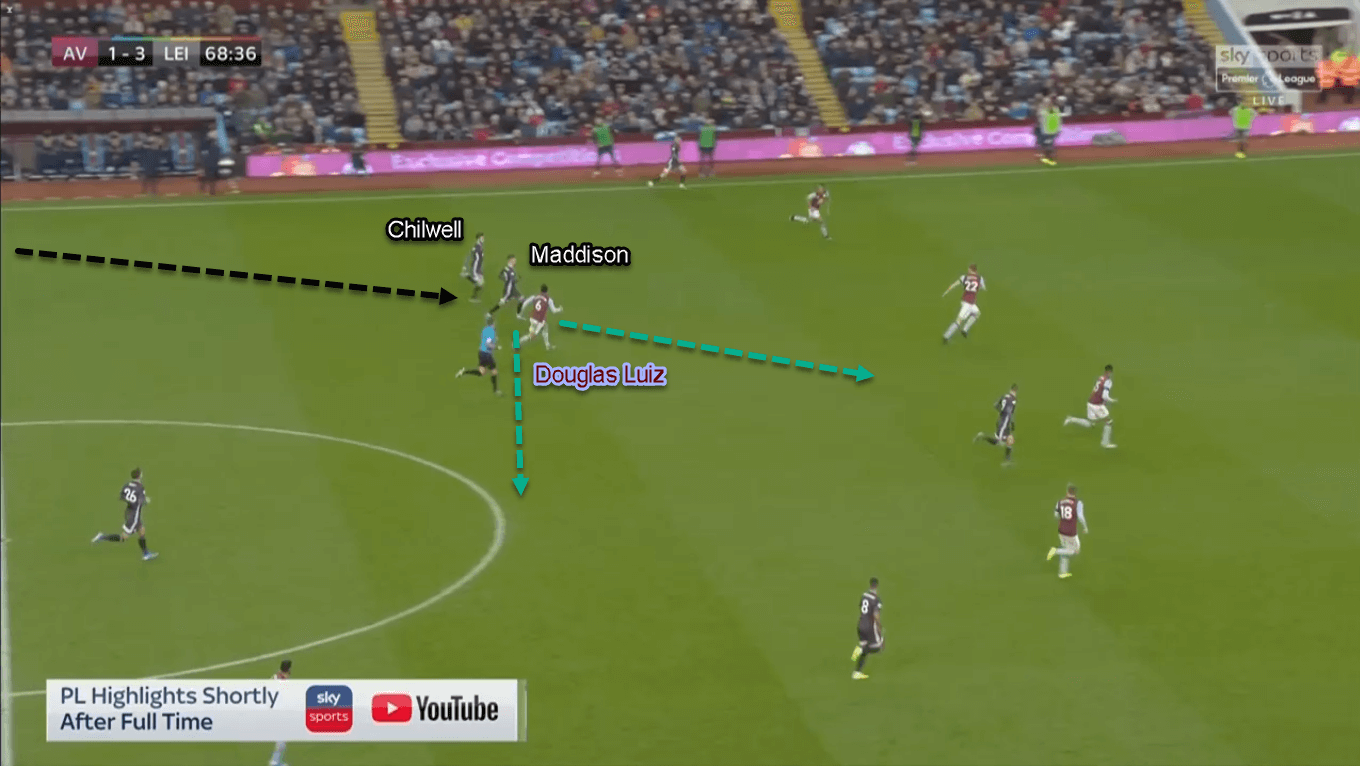
Maddison also needs to work on his defensive IQ. On some occasions, he would focus too heavily on the ball but let his man move away behind him. On another occasion, he could even focus too heavily on his man, yet opening a forward passing lane for the opponents.
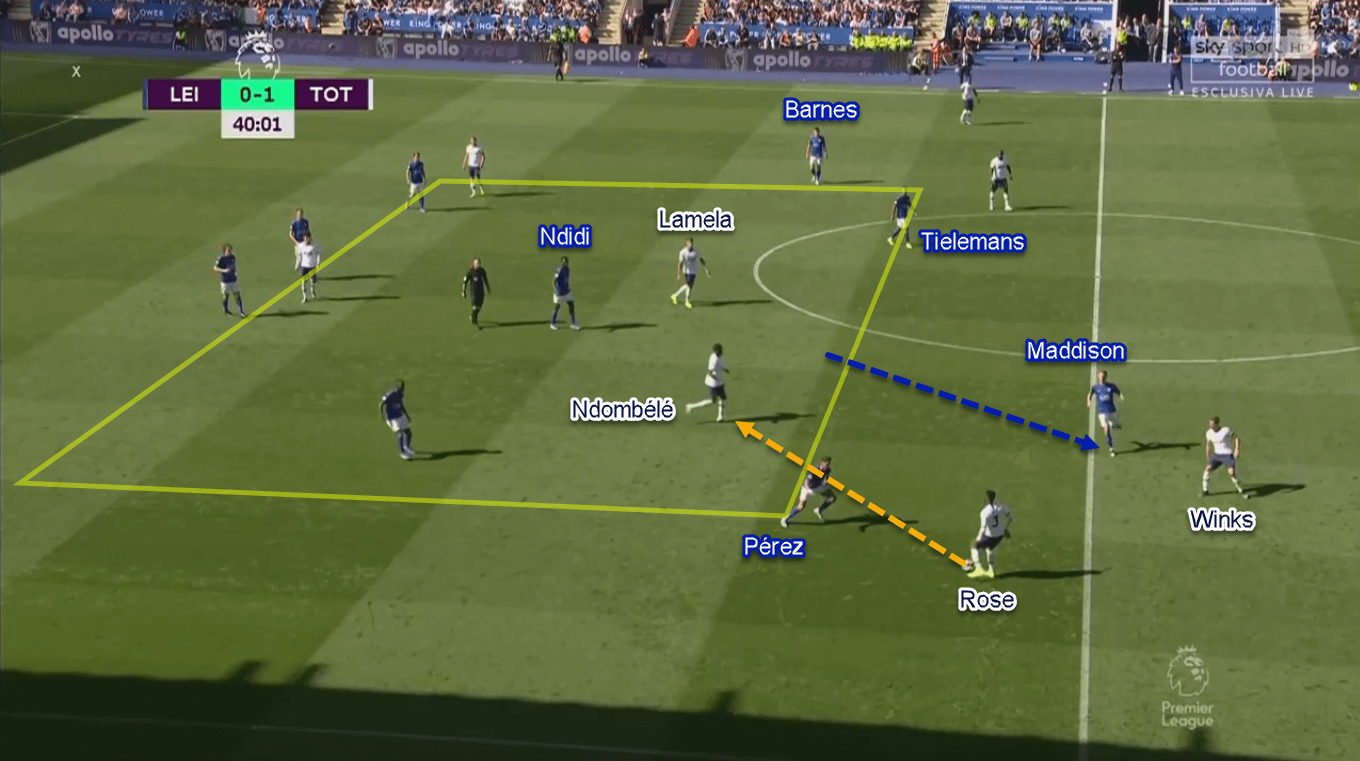
It’s a bit understandable, though, as Maddison is originally an attacking midfielder. Offensively, that makes him more comfortable to play in the final third with nearby teammates to combine with. Defensively, he could rely on the defensive midfielder(s) if the ball gets past him. But it’s not a justification because now he’s being deployed more often in a deeper position.
Conclusion
Maddison is truly a joy to watch. His versatility and great dead-ball ability make him one of the most promising Englishman for years to come. However, he needs to mature and adapt to his new position. Playing as a central midfielder requires a better understanding of the space, broader vision, and more variable passing types. He must also improve his offensive and defensive positioning to master the central midfielder role.
His brilliant display has rewarded him a long-awaited Three Lions debut in November. The big question is: can he convince Southgate to give him a spot in England’s Euro squad next year? Let’s wait and see.





Comments